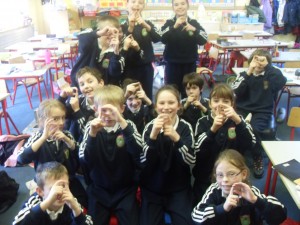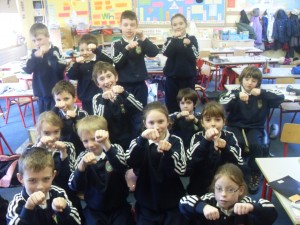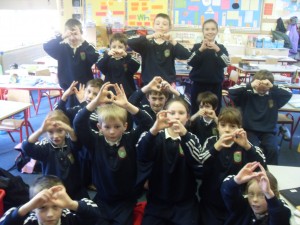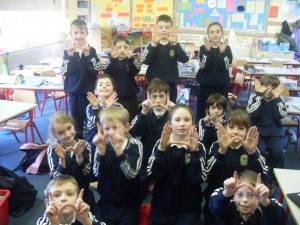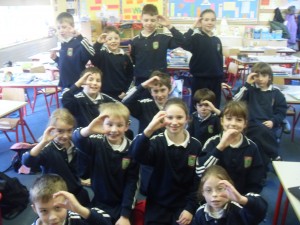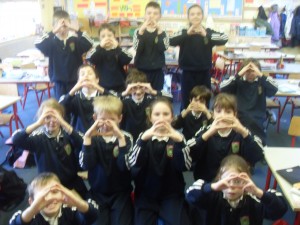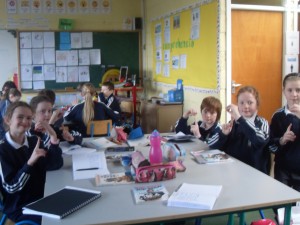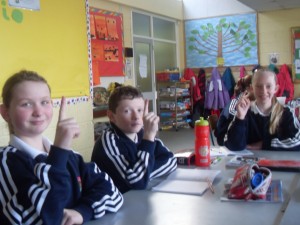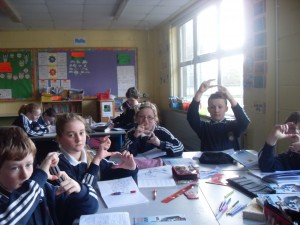The middle and senior classes have been following ‘Building Bridges of Understanding’, a reading comprehension programme aimed at giving children the strategies they need to become good readers. By learning about these strategies, children can become more involved in the text they are reading and deepen their understanding of the text. Each week, a new strategy was modelled in the classroom first by Ms. Hynes and Mrs. Redican, using a variety of picture books, and applied by the class teacher in a follow-up lesson.
2nd to 6th class have learned about the following comprehension strategies:
Prediction, visualizing, making connections, questioning, clarifying, declunking and inferring.
5th and 6th class have additionally learned about the following strategies:
Determining Importance and Synthesis.
For each strategy children have learned a sign (called a comprehension processing motion or ‘CPM’) to indicate when they want to use that strategy during class reading.
Prediction:
Children make a ‘P’ sign to indicate when they want to make a prediction. Predictions can be made before, during or even after the story. Good readers make predictions about what might happen next in the story, using information they have gathered so far.
Visualizing:
Visualizing while reading is like having a movie in your head of what is happening in the story. Good readers can have a picture in their head, but other senses too such as sounds, smells, feelings.
Making Connections:
Good readers make connections between what they read in the story and things that have happened to them or to people they know. They can also make connections to other books they have read, movies they have seen, or things that are happening or have happened in the world.
Questioning:
Children make a ‘W’ sign for ‘I wonder why..’ Good readers ask themselves questions before, during and after reading. These questions can be generated by what they have read or seen in the book, or sometimes what is not shown or said in the text. Some questions can be left unanswered by the author and then good readers will use their own interpretation of the story to come up with their own answers.
Clarifying:
Children make a ‘C’ sign to indicate they need something clarified. This could be a word, phrase or idea that is confusing and needs further explanation. Good readers make sure that what they are reading makes sense to them, and stop to clarify if not.
Declunking:
‘I have a CLUNK’. When a reader comes across a word that they cannot understand, then they need to ‘declunk’. The children have learned techniques for decoding these words through the declunking strategy.
Inferring:
Children make an ‘i’ symbol to show they want to infer. Through the inferring strategy, children learn how to read the ‘invisible ink’ of the story, reading between the lines to determine what the author is hinting at, but not saying.
Determining Importance:
While reading a text, good readers separate out the essential and non-essential information and thereby determine what is important in the text. The determining importance strategy enables children to identify, sort and order the key pieces of information in the text.
Synthesis:
Synthesis is the skill of combining all the comprehension strategies and applying them before, during and after reading, so that the reader constructs their own individual meaning from the text.
The next step in the comprehension programme is to begin group work in the classrooms, where the children will work together in groups to apply the strategies they have learned so far. This will begin after the February mid-term break.

